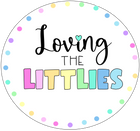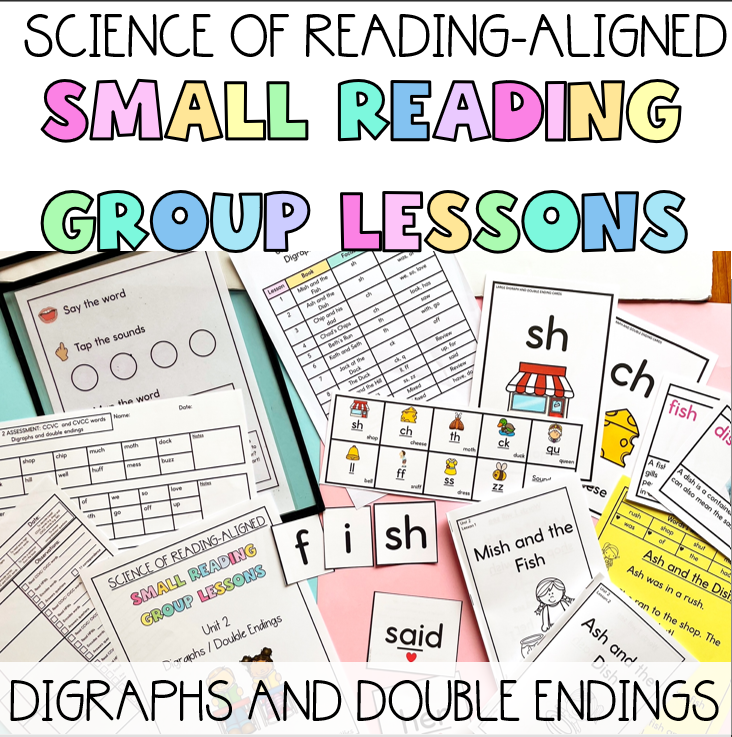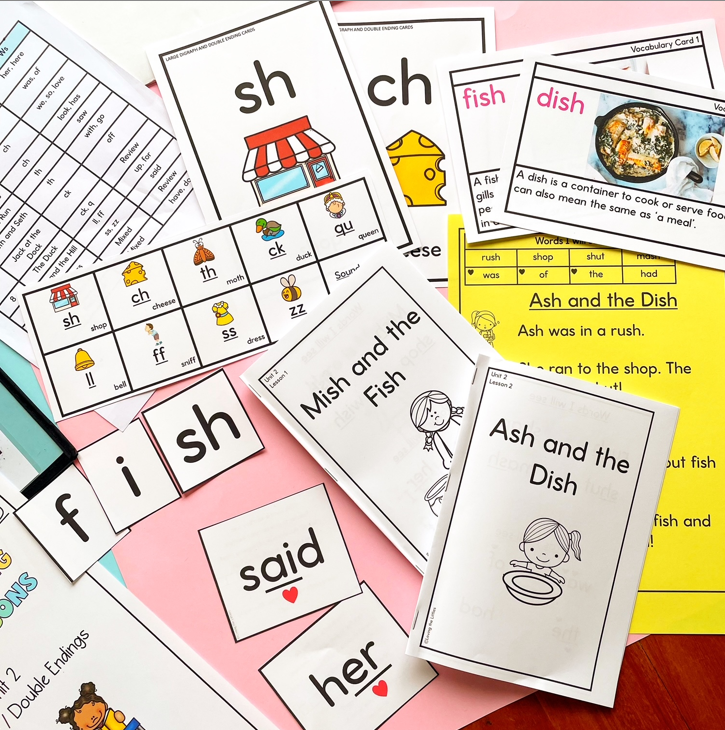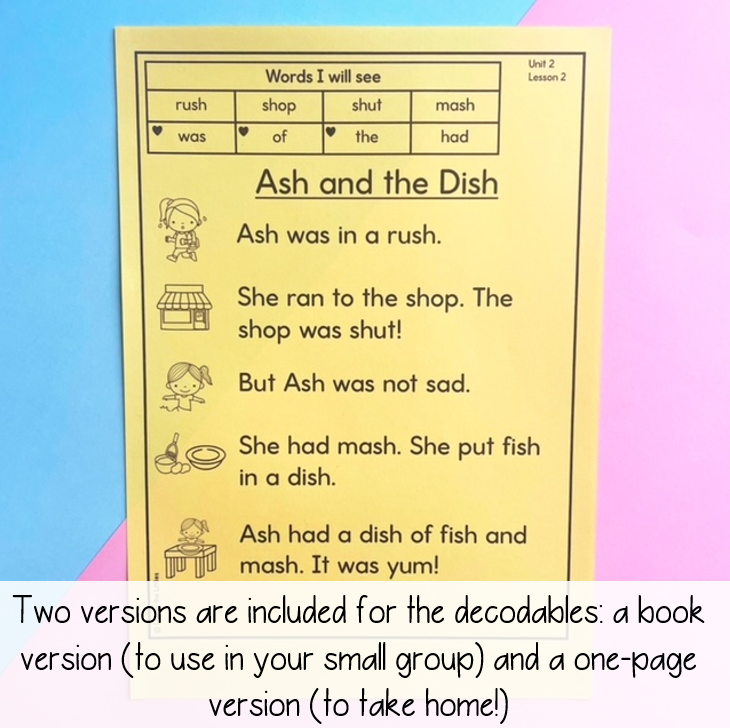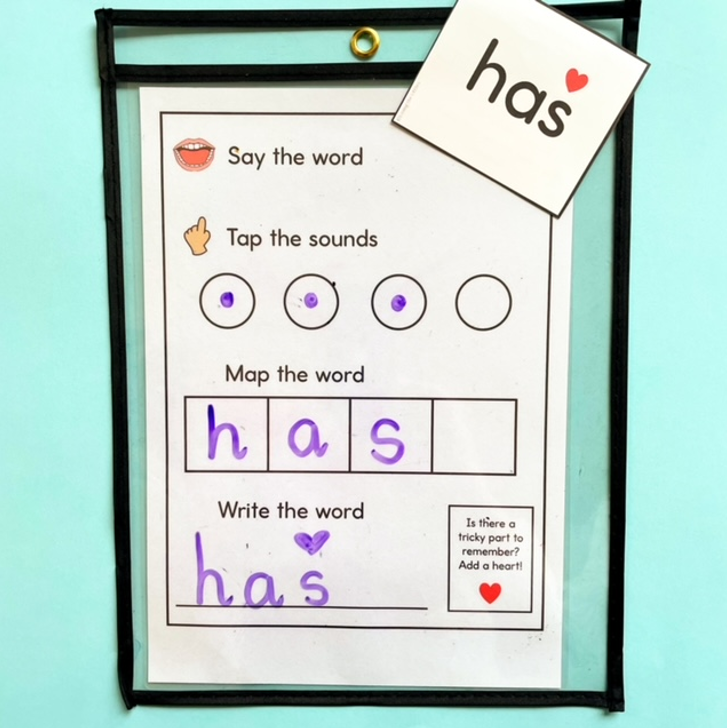Loving the Littlies
Small Reading Group Lessons for Prep/Kindergarten | Unit 2 Digraphs
Couldn't load pickup availability
Secured and trusted checkout with:

Are you a Prep or Kindergarten teacher who wants to implement Science of Reading best practices into your small reading groups, but not sure where to start? This resource was made for you! This is Unit Two, the follow up to my best-selling Unit One. In Unit Two, students learn about digraphs and double endings. The unit follows a set scope and sequence, designed to help your beginning readers learn to read. Featuring 12 lesson plans, each with their own decodable book, you’ll have everything you need to deliver your small group reading lessons with confidence.
Important: This is a digital resource. No physical resource will be shipped to you. You will be able to download the resource immediately after purchase.
Please check out the PREVIEW here.
What is included in this resource?
- This is Unit 2 which focuses on digraphs and double endings. Throughout the unit, students will be taught to read CCVC words (e.g. shop), CVCC words (e.g. wish), and double ending words - ll, ff, ss, zz (e.g. well, mess).
- 12 lesson plans that follows a particular scope and sequence. (See below for the scope and sequence). Your students will not be expected to read a word if they haven’t already been taught those particular sounds!
- The lesson plans include Science of Reading best practices (see below for details). Do you have to include every part of the lesson? No! You can select parts that suit the needs of your students and how much time you have.
- 12 decodable books. These book are originals written by me and they follow the below scope and sequence. They focus on digraphs and double endings (with a handful of high-frequency words). They also come in a single-page version for you to send home with your kids for fluency practise! (That way you can keep the book version at school).
- High-frequency word flash cards. Across this unit, students will be taught 18 high-frequency words. Some of these words are decodable (they can be sounded out), and some are heart words (they have a tricky part that needs to be learned ‘by heart’). The flash cards include a teacher script on the back of them to help teachers explicitly teach the high-frequency word.
- Word Mapping tool. A word-mapping tool is included to help students learn new high-frequency words.
- Vocabulary cards. Each lesson there is a vocabulary focus to teach your students about. Vocabulary flash cards are included!
- Observations checklist. An observations checklist template is included for you to record observations about your students’ abilities and areas of need.
- Large digraph flash cards. These flash cards are included to help you to explicitly teach new digraphs (and revise old ones)
- Small alphabet cards. These are included to help students practise blending sounds together to read words
- Sound strips - These are included for students to revise the sounds that they have learnt so far
- Assessment tool – At the completion of Unit 2, you can use this assessment tool to assess your students’ ability to read CCVC and CVCC words, and high-frequency words.
What scope and sequence does this unit follow?
This unit focusses on DIGRAPHS AND DOUBLE ENDINGS and sounds are introduced as per below. Across the unit, 18 high-frequency words (HFWs) are also introduced.
Lesson 1 – Phonics: sh HFW: her, here
Lesson 2 – Phonics: sh HFW: was, of
Lesson 3 – Phonics: ch HFW: we, so, love
Lesson 4 – Phonics: ch HFW: look, has
Lesson 5 – Phonics: th HFW: saw
Lesson 6 – Phonics: th HFW: with, go
Lesson 7 – Phonics: ck HFW: off
Lesson 8 – Phonics: ck HFW: Review
Lesson 9 – Phonics: ll, ff HFW: up, for
Lesson 10 – Phonics: ss, zz HFW: said
Lesson 11 – Phonics: Mixed HFW: Review
Lesson 12 – Phonics: Mixed HFW: have, do
What is included in each lesson?
Each lesson follows the same structure. You could do each part of the lesson, choose the parts that best suit your students, or split the lesson across two sessions. You can decide what works best for you, your students and your timings.
- PHONEMIC AWARENESS WARM UP – In this part of the lesson, students will practice phonemic awareness skills such as blending and segmenting phonemes, and isolating, deleting and substituting phonemes.
- PHONICS FOCUS – In this part of the lesson, the teacher will explicitly teach the new sounds that are being introduced. Students will also use their sound strips to practise previously learnt sounds.
- HIGH-FREQUENCY WORDS FOCUS – In this part of the lesson, the teacher will explicitly introduce the new high frequency word(s). Students will use their word mapping mats to tap, map and write the word(s)
- VOCABULARY FOCUS – In this part of the lesson, the teacher will use the vocabulary card to teach students about the focus word.
- DECODING PRACTISE – In this part of the lesson, the teacher will model (and students will practise) blending sounds together to read CCVC and CVCC words. These words are words that will feature in the book.
- READING AND QUESTIONS – In this part of the lesson, students and teacher will read the decodable book. They will also answer questions about the story
- ENCDODING PRACTISE – In this part of the lesson, students will practise hearing and recording sounds of CCVC and CVCC words from the story on a mini whiteboard
- DICTATION – In this part of the lesson, the teacher will give students a sentence from the story. The teacher and students will write the sentence on mini whiteboards. The teacher will remind students about capital letters, spaces, full stops etc
- FLUENCY PRACTISE – In this final part of the lesson, students will read the book 2-3 times independently, with a partner or with the teacher. They will then be given the single-page version to take home and read with their families.
Please note these resources are in a ZIP file. All resources are in PDF format so are not editable.
Please note to print the decodable books, you will need to have access to a printer that prints double-sided. The books are in a print, fold and staple format.
Unit One CVC Words
If you like the look of this unit, Unit Two, you might like to check out Unit One – CVC words.
Q: Can my students use Unit Two if they haven’t used Unit One?
Whilst Unit Two can be used without having used Unit One, it is far more beneficial to have completed Unit One with your students before starting Unit Two. This is because the sounds and high-frequency words that were explicitly taught in Unit One, appear in Unit Two. However, they are not explicitly re-taught. It is assumed that students working through Unit Two have already learned the sounds and high-frequency words from Unit One.
Return & Refund Policy
Return & Refund Policy
Since your purchase is a digital product, it is deemed “used” after download or opening, and all purchases made on www.lovingthelittlies.com are non-refundable or exchangeable. Since the products made available here are intangible, there is a strict no refund policy.
Shipping Info
Shipping Info
Products are delivered digitally and immediately after purchase. There is no postal shipping method or specific delivery time.
Share
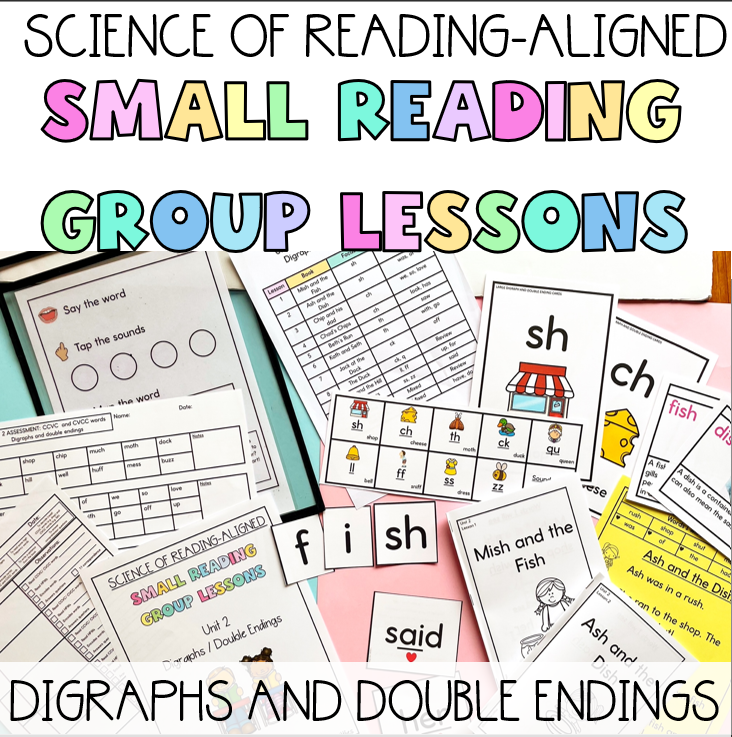
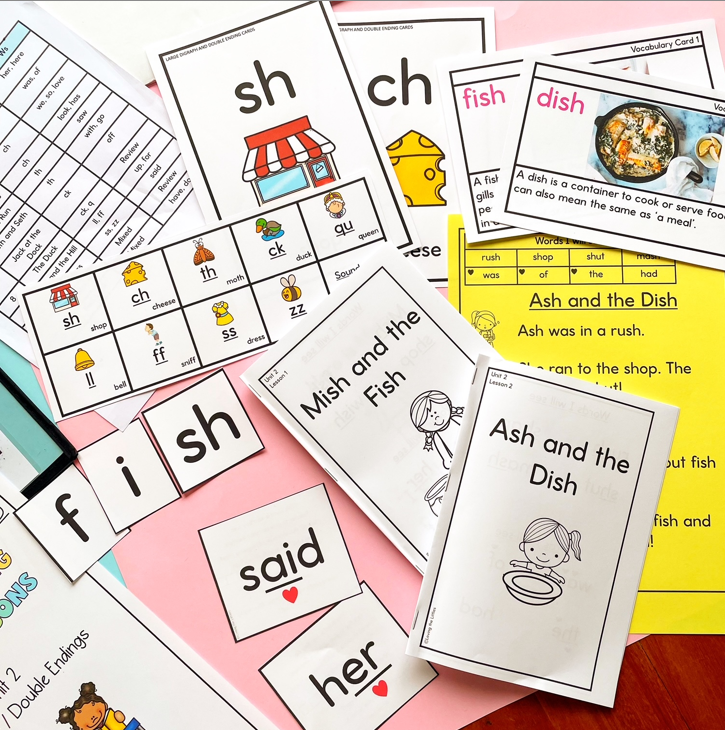
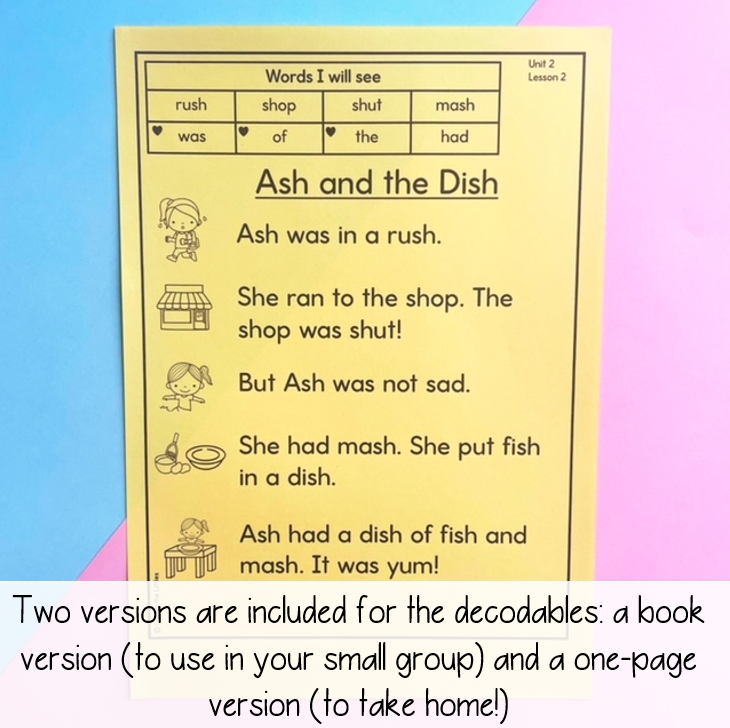
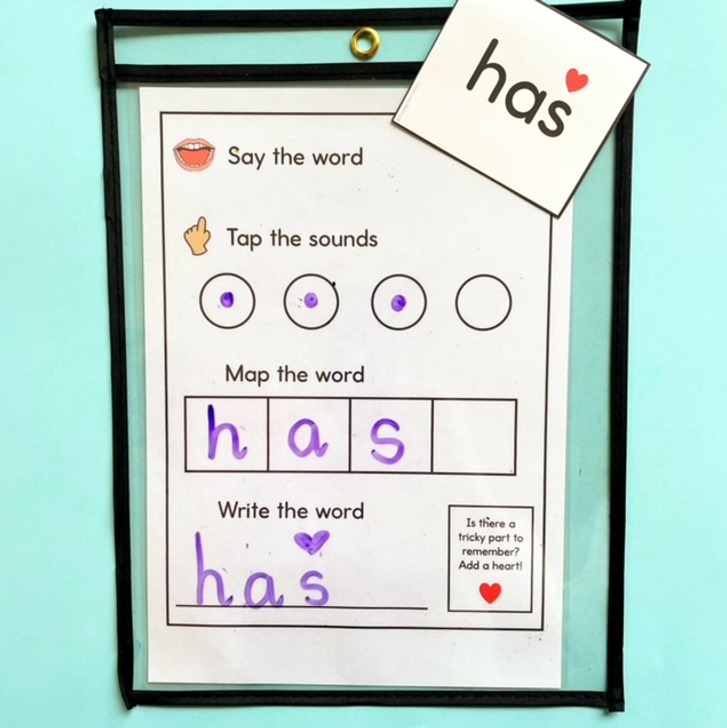
Featured products
-
Classroom Expectation Slides | Rules and routines PowerPoint
5.0 / 5.0
(1) 1 total reviews
Regular price $4.00 AUDRegular priceUnit price / per
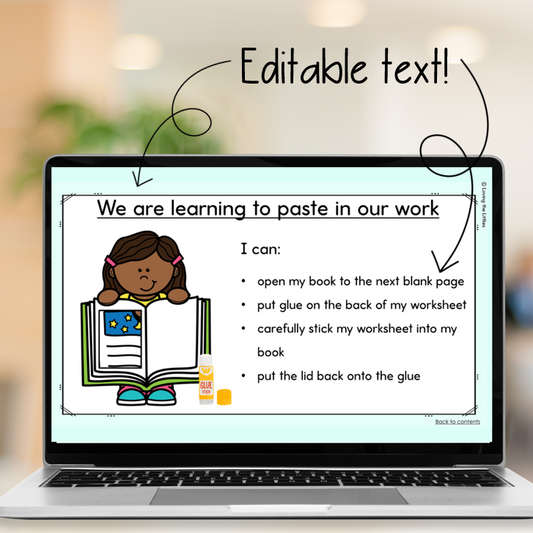
-
Bump it up wall for Prep/Kindergarten
5.0 / 5.0
(1) 1 total reviews
Regular price $4.99 AUDRegular priceUnit price / per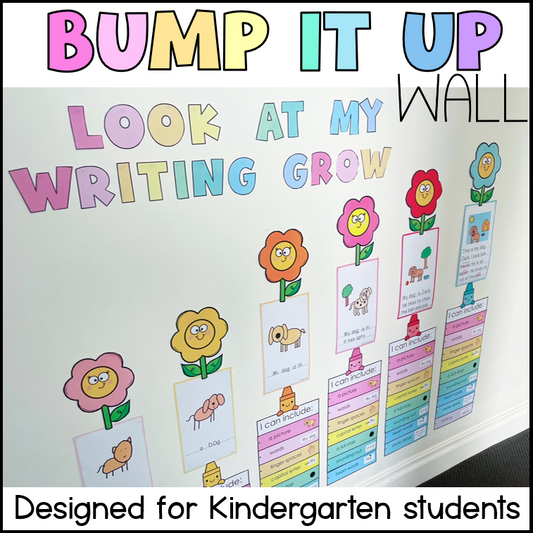
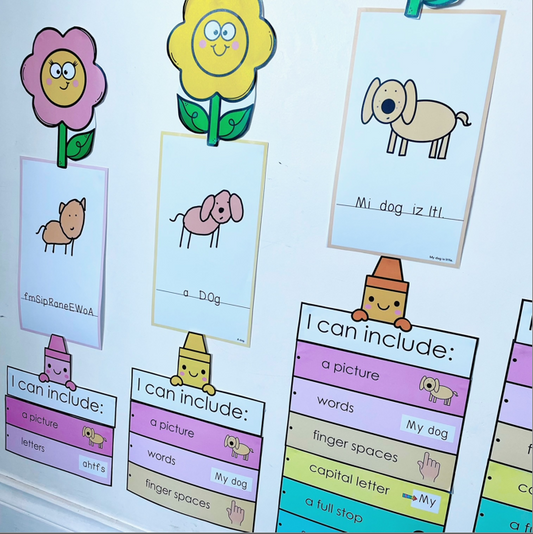
-
Whiteboard Cues Posters | Mini Whiteboard Routines | Chin It Park It Bin It Hover It Cap It
5.0 / 5.0
(1) 1 total reviews
Regular price $3.00 AUDRegular priceUnit price / per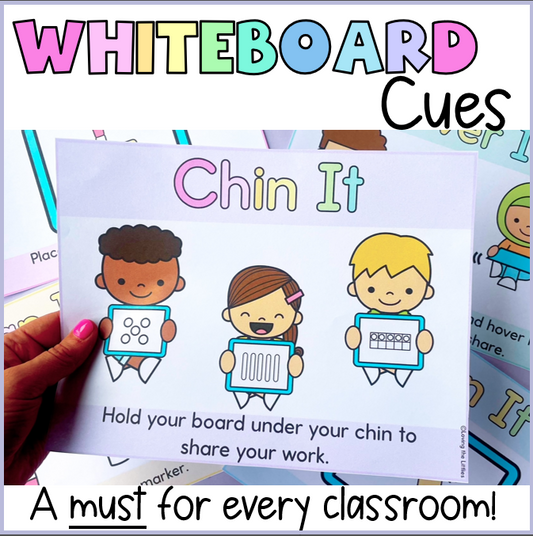
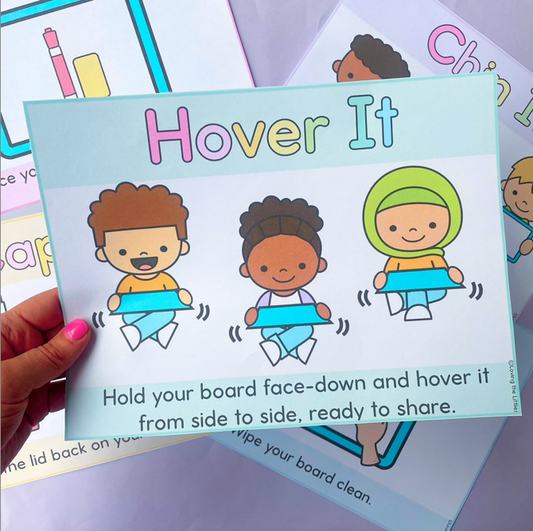
-
Getting Started in Prep Bundle | Essential Kindergarten Resources Bundle | Bump It Up Wall
Regular price $49.00 AUDRegular priceUnit price / per$159.48 AUDSale price $49.00 AUD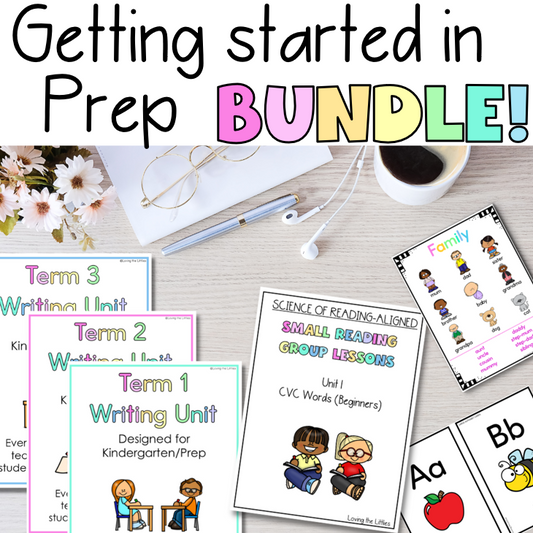
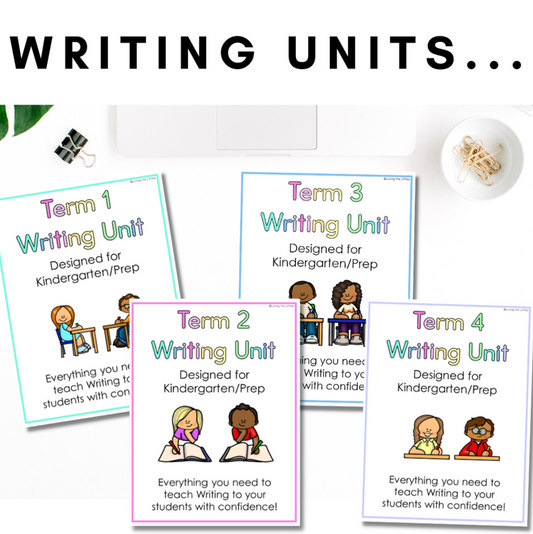 Sale
Sale
